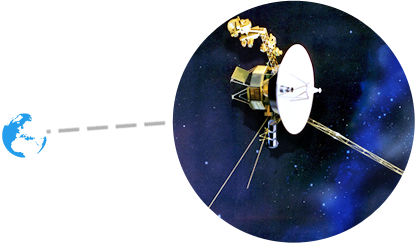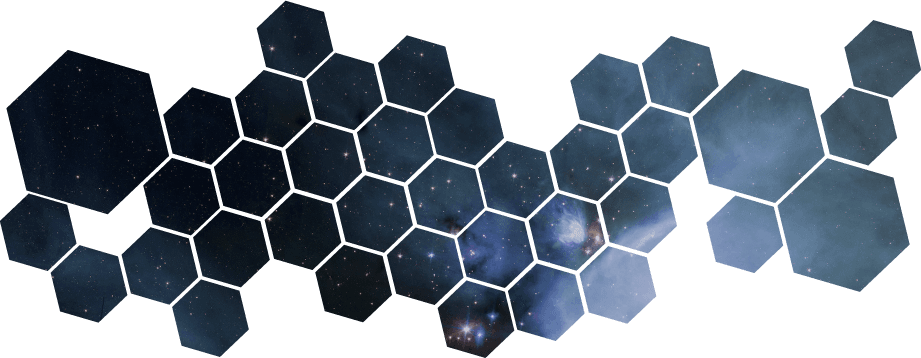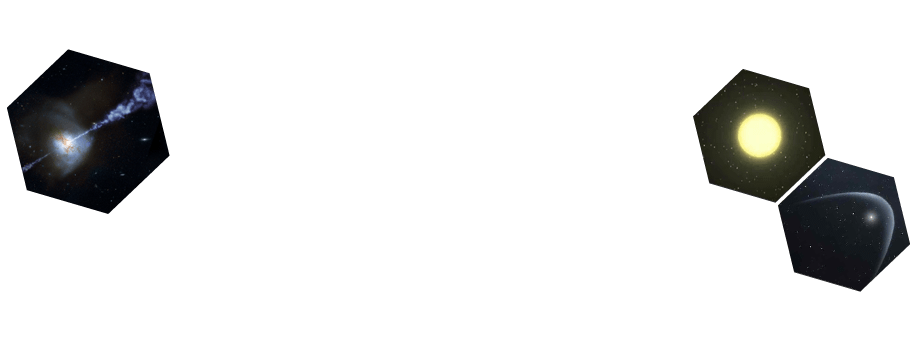The Challenges of Interstellar Space Exploration
Advances, inventions, and innovations that arise through exploring space have the power to dramatically improve daily life on Earth for citizens of every country. Humans landed on the Moon less than ten years after we first achieved Earth orbit. And for decades since, images and data from satellites, Mars rovers, space telescopes and deep space probes bring the universe down to Earth.
Given the success of the Space Shuttle, Skylab, Mir, International Space Station (ISS), and Shenzhou, combined with omnipresent sci-fi images of humans traipsing across the galaxy, the complexities of interstellar travel may be trivialized. However, reaching another star is an incredibly difficult challenge, and it involves much more than meets the eye.
Time & Distance
Relative to Earth, our solar system is a very big place. Yet Pluto is just across the street when compared to the distances between stars or interstellar space. And just as it is easier to know the conditions in your neighborhood than across the country, we are much more knowledgeable about interplanetary space than that beyond our solar system.
Distance
How Far is Far?
These almost unimaginably large distances have special units of measure to make the numbers more manageable.
Astronomical Unit (AU)
The distance from the Sun to the Earth – 92.955 million miles.Light year
The distance light travels in a year; light travels at 186,282 miles per second (300,000 kilometers per second)—that is about 5.8 trillion miles (9.4 trillion kilometers). It takes light from the Sun 8 minutes to reach the Earth.Parsec
About 3.26 light years.
Distance to Nearest Star
Almost every day, new stars and exoplanets are discovered that each have the potential to teach us more about the universe and ourselves. While we have yet to pinpoint a target destination for an interstellar journey, for now let’s use Alpha Centauri to talk about the challenges we’ll face.

4.3 light years
25.2 trillion miles
relative distance to nearest star

IT WOULD TAKE
52,880,000 round TRIPS
from the Earth to the Moon
to reach alpha centauri
the farthest we’ve gone
Voyager 1 is the farthest manmade object that has ever been sent from Earth. Voyager is about 100 AU away from Earth and has been traveling for over 30 years at 35,700 miles per hour.

are we there yet?
Imagine that Earth is Santa Clara, California, and New York City is the closest star to Earth (Alpha Centauri). On this scale, if Voyager were traveling at a steady rate of 35,700 per hour since its launch in 1977, it would have only traveled 1 mile.

time
a bit of perspective
We’ve talked about distance and relative distance. But what about relative time? Assuming that faster-than-light velocities are not possible, let’s compare the journey with what has happened in human civilizations in those timeframes.
SPEED |
TIME TO ALPHA CENTAURI |
RELATIVE TO HUMAN HISTORY |
|
SPEED OF VOYAGER(35,700 mph) |
70,000 yrs |
All of human historyFrom the first appearance of modern man |
|
3 X |
SPEED OF VOYAGER |
20,000 yrs |
All of art historyFrom cave paintings to present day |
1000 X |
SPEED OF VOYAGER |
70 yrs |
A Human Lifetime |
multigenerational spacefarers
If a journey to another star takes longer than one human lifespan, generations may be born and die in space, leaving their descendants to complete the mission.

The Ship, The Ecosystem and Journey
An interstellar journey isn’t just about nuts and bolts. The vessel needs to stay on course, respond to unexpected events, communicate with folks back home or along the way, grow knowledge and technology capabilities and to accommodate spacefarers and keep them healthy, happy, working and engaged. Some things to consider:

How will we store and recycle our most vital resource?

Government is a necessary tool for keeping order on Earth and far, far away from it. How will we represent ourselves? By our nationalities or simply by planet Earth?

How does the ship arrive to the desired destination or avoid dangers in its path?

How will we grow, store, and secure food in deep space?

What art, films, and technologies will accompany future humans to another star? What new cultures will be created and must be accommodated on the journey?

When petroleum becomes a thing of the past, what will replace it?

What knowledge will the population on board need, what will they learn, and how will we exchange information between the starship and Earth? How will they build that knowledge and their capabilities?

Space is big, dark, and lonely. How will spacefarers spend their time?

What if a machine breaks down and the nearest spare parts shop is light years away? We’ll need self-renewing and self-correcting machines for interstellar travel.

The future ship will need to have an abundance of raw materials and/or a means to identify, harvest, process, and manufacture supplies from them.
impact of weightlessness on the human body
Space isn’t just tough on the machines. It takes a toll on the body too.

The human heart and cardiovascular system de-conditions and loses some of its ability to pump blood effectively when one returns to a weighted environment.

Muscles need constant challenges to maintain strength. Astronauts have lost up to 13% of back muscle mass in just 8 days of weightlessness.

Humans lose calcium and bone matrix. Bones become more susceptible to fractures.
invisible obstacles
Perhaps the greatest challenge is the great unknown. No one can tell how much dust and other matter that does not give off light is out there, for precisely that reason: we can’t see it from Earth. But the unknown is also one of our greatest incentives. What wealth of knowledge awaits us?
There’s only one way to find out!


Thinking About Solutions
energy
Energy and propulsion, while closely linked, are not the same things. Energy in some form is required to propel or move the vehicle. And energy is also needed to power the spacecraft’s systems, like computers, lights, environmental controls, navigation, scientific sensing equipment, agriculture, etc. There are many ways to generate energy, but most of the methods that we use on Earth today—for example, burning fossil fuels or even rocket propellants—on a pound for pound (or kilo for kilo) basis produce such small amounts of energy, that we could not collect and store enough material on Earth to power the trip!
So, one of the challenges (and benefits to life here on Earth) will be developing the technology to build much, much more efficient power sources. Transforming the light from the Sun into electricity is a good means of generating energy when we are close to it; however, the further away, the less light there is to use. In between the stars, solar energy becomes less practical.
Nuclear Power
Nuclear sources generate exponentially more energy than chemical sources and may be one solution for rapid interplanetary and even interstellar travel.
Fission
Nuclear fission energy, which generates heat and electricity when atoms are split apart, is used on Earth today. Some spacecraft already use fission to power instruments, but more development is required to make larger systems safer for launch and for the humans on board.Fusion
Fusion is the same process that powers the Sun, and generates even more energy than fission. However, aside from weapons (thermonuclear bombs), we currently do not have a reliable means of generating and controlling large quantities of this energy, although scientists are currently working on this.Antimatter
Antimatter fuels the most powerful means of energy generation known. Incredible quantities of energy are released when matter and antimatter meet. Currently, though, only small amounts of antimatter have been generated and only in particle accelerators, for very short periods of time.
how we might get there
How long it will take to travel to another star depends upon how fast we can travel.
*Images courtesy of NASA/JPL-Caltech/Harvard-Smithsonian CfA/CXC/STScI/UIUC/Univ. of Minn./STScI/AURA










